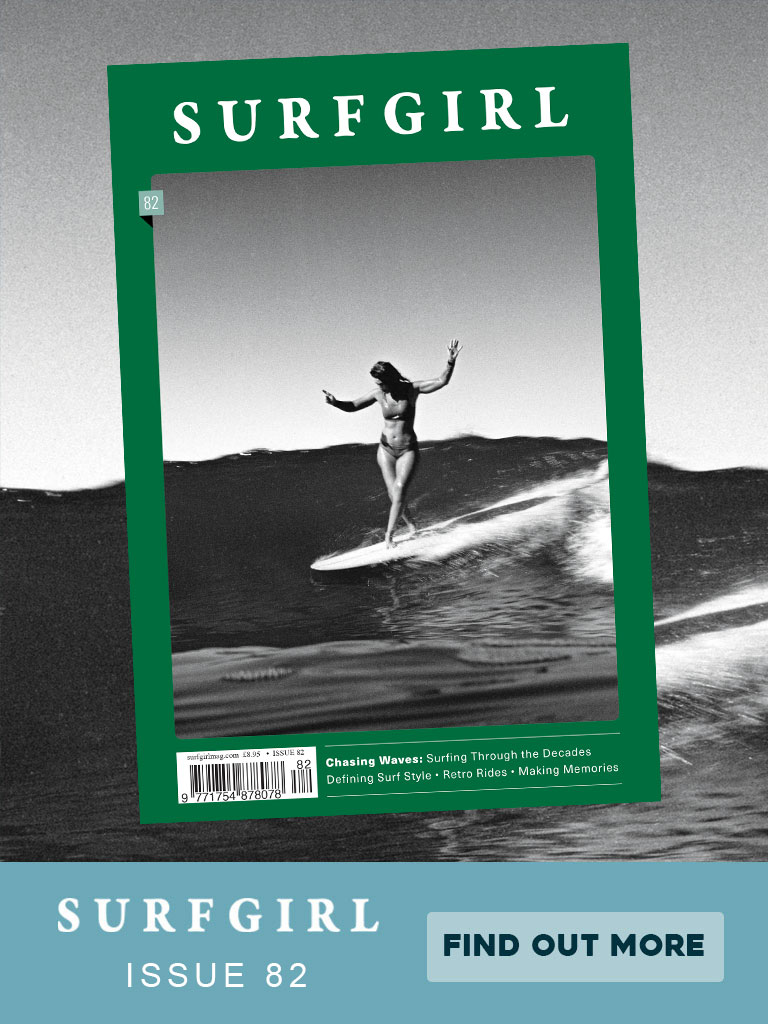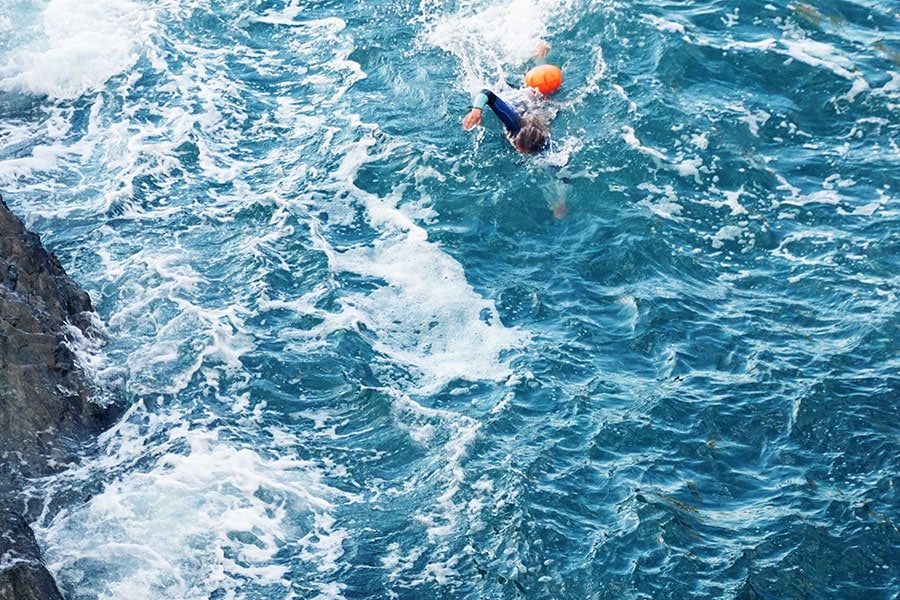
In an endeavour to be as fit as we can to surf, we talk to swim instructor Kate Sparks, and ask her about the benefits of swimming for surfing.
Swim training is also your weapon against fear once you’re back on your board, as when you take off on a wave confidence is key. If you fully back yourself that the wave you go for is going to be yours, it most likely will be. Those slithers of doubt that undermine our courage creep in when we imagine the worst-case scenarios. ‘What if I wipe out badly?’ or ‘What if my leash snaps and I’m hundreds of metres out to sea?’ Being a strong swimmer helps to crush those doubts, as you know that you are physically capable of swimming back to shore and taking care of yourself.

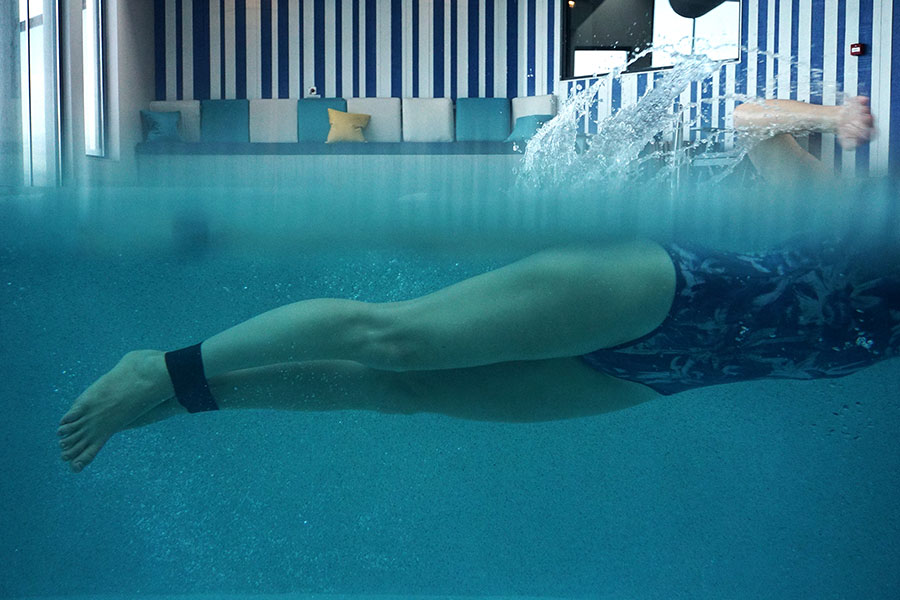
I’ve created a mini training programme that’s designed for the pool, but elements could be taken into the sea, lake or any body of water suitable for swimming. Sea swimming, just playing around, or bodysurfing the waves only makes you more relaxed in the ocean, and therefore will enhance your intuitive performance once back on your board:

Warm up
with 5-10 lengths of mainly front crawl, as this is the stroke most like paddling a surfboard – strengthening the back, shoulders and triceps. You can also include backstroke to counter the muscles used in front crawl and butterfly to push yourself. Try to only use breaststroke as a treat if you are tired, as this stroke is least similar to paddling.
Try each of the exercises below for 1-4 lengths, depending on your swim fitness level, focusing on technique and keeping a steady pace. Break up the drills with 1-4 lengths of solid front crawl, focusing on power and speed to give your session the combination of slow and fast exercise (interval training). We naturally do interval training when surfing, with bursts of dynamic movement when catching a wave coupled with periods of gentle movement around the line-up between sets. This will increase your lactic acid tolerance, allowing you in time to work harder for longer, and resulting in a higher level of aerobic fitness.
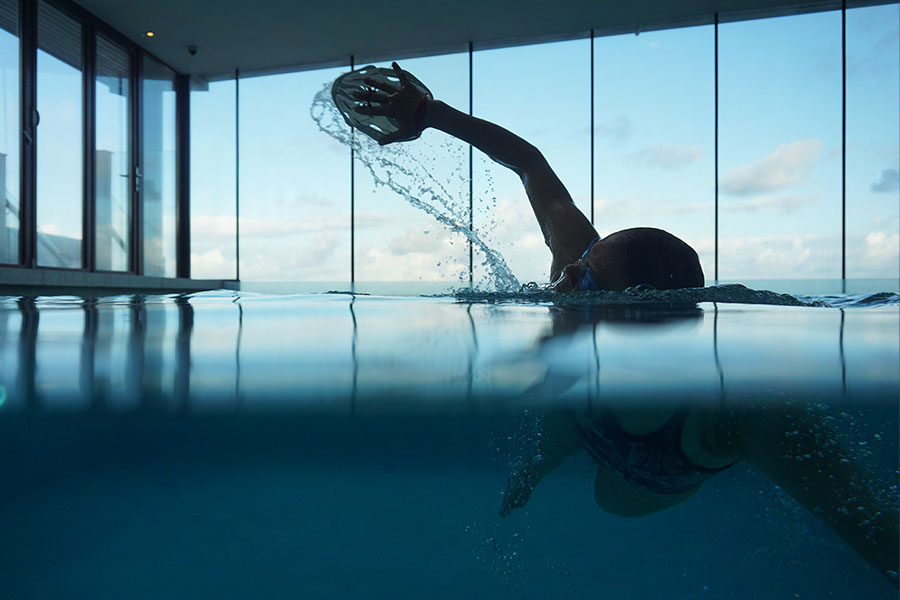
Hand paddles
Ankle swimming elastic
Using ankle elastic restricts your feet and causes your lower body to sink into the water, causing a drag. This extra weight makes you work harder to pull yourself through the water, engaging your arms, chest and your core muscles, which are heavily relied on in surfing. This exercise will make paddling your board afterwards feel like a dream, as the exercise is very challenging.
Closed fist freestyle
With your closed fist there is less resistance and therefore you are forced to fire up your stroke rate, swim more effectively and make more use of your forearms to become more aware of your length of stroke and engage your core muscles.
Warm down
Warm down with a couple of lengths of head up front crawl to mix it up, followed by a blend of your favourite stokes (even if that is breaststroke), so that your last memory of your training session is a good one.

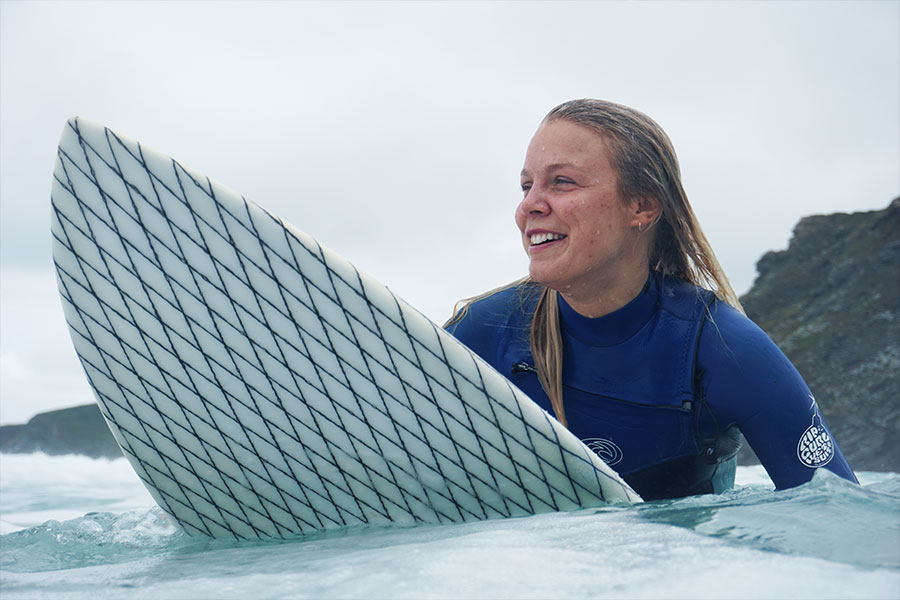
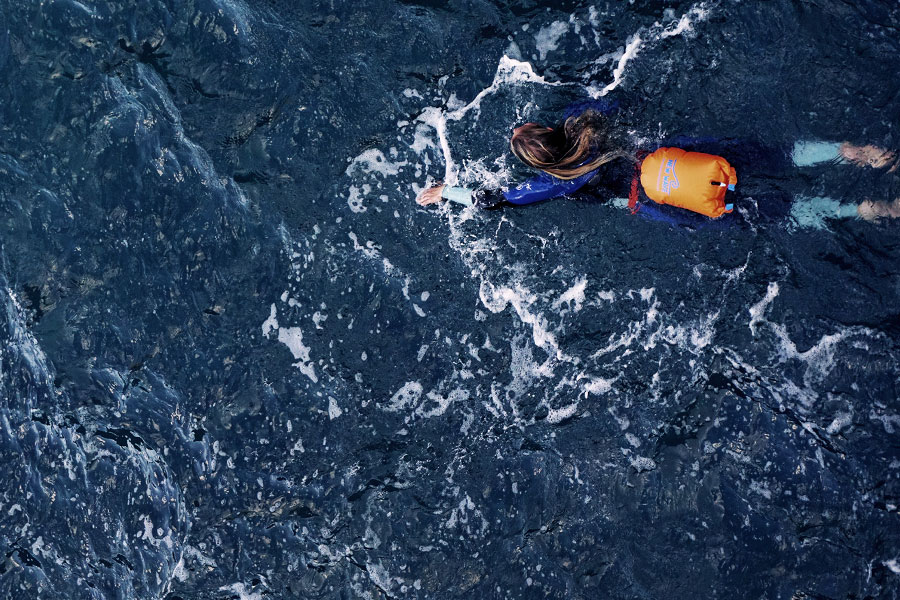
Common front crawl mistakes:
- Bent knees while kicking – this error increases resistance and takes more effort, so instead kick from the hips and keep legs straight with small, fast kicks.
- Swimming flat (with belly button facing the floor) – you should be rotating slightly from side to side as you swim, to reduce the strain on your shoulders and improve momentum through the water. This technique also crosses over to paddling a surfboard.
- Pulling crooked – make sure you pull straight with fingertips facing the bottom of the pool, to maximise water displacement.
- Looking forward – unlike in surfing, in swimming you want to be looking down to the line on the bottom of the pool, this will make sure your hips don’t sink too low and improve how steam lined you are.
Motivation tips:
- If you know there’s no chance of surf the next day, prepare your swim bag the night before, so all you need to do is wake up, grab your swim bag and head to the pool, without even thinking about it – you were going to shower anyway, so you may as well do it as the pool!
- Go swimming especially if you’re having a bad day – its therapeutic benefits will reduce your stress, uplift you and hopefully turn your day around.
- Save your favourite skin and hair care products for your swim bag. This way you will be excited to get to the pool so you can finish your workout and use your lovely things!
- Most public pools have a pay as you go option, so there is no commitment and you can rock-up and do this across the country.
- If you have a long car drive and think that you’re not going to be able to exercise that day, instead of breaking at the services, make your ‘rest’ stop the nearest public pool! They often have a café or some snacks on offer too.
Sea swimming safety:
- Check the local weather conditions, sea state and tide implications.
- Understand the swimming zones at your local beach.
- Try to swim with a buddy, but if not tell somebody you are sea swimming and the time you expect to return.
- Swim with a safety buoy so other water users such as jet skis and boats can clearly see you. The safety buoy doubles up as a dry bag and its useful for on a long swim to bring along snacks!




